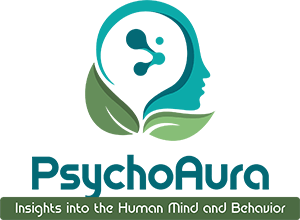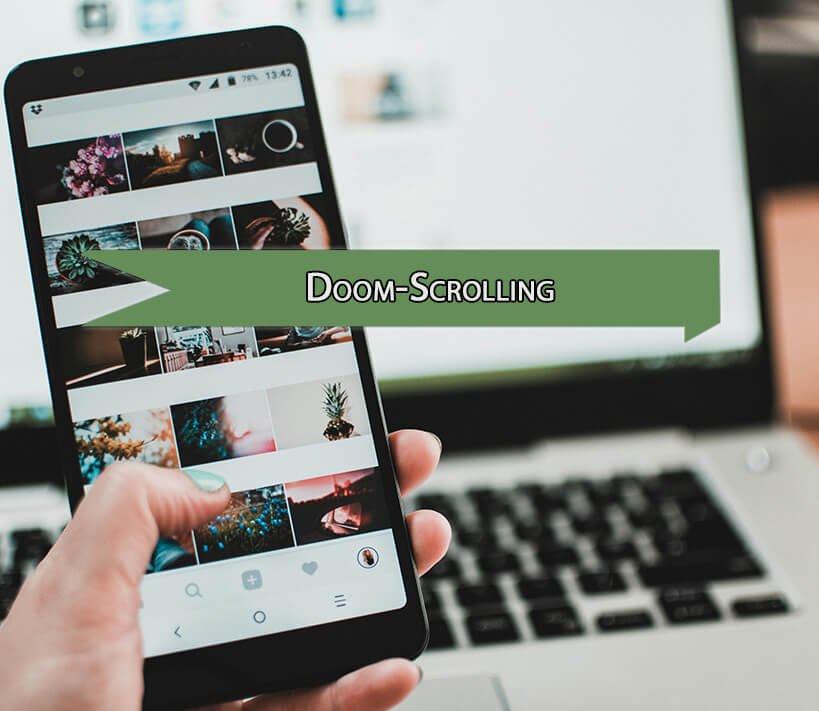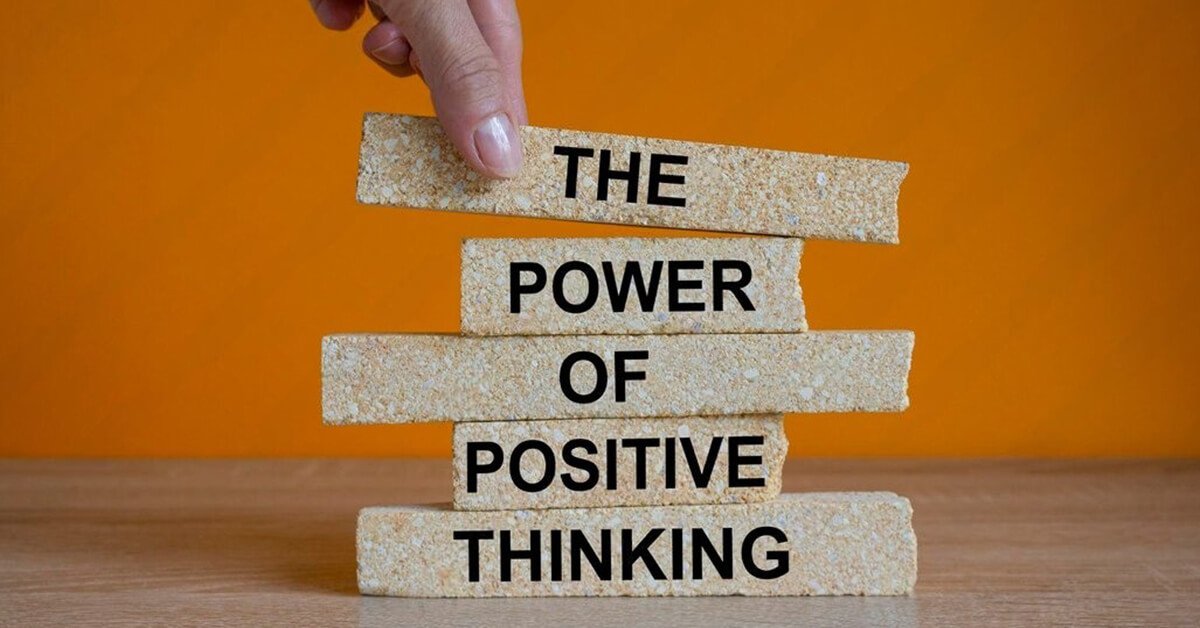Most of us wake up, and the very first thing we do is check our phones, it is become a habit for many. The moment we wake up, we look at our mobile to see if there are any notifications. From one notification, we move to the next. We find ourselves reading about political chaos, climate catastrophes, or economic downturns, all of this before we even say our morning prayer or grab a cup of coffee. Welcome to the age of Doom Scrolling: the compulsive consumption of negative news online. What began as a coping mechanism during global crises has morphed into a dangerous psychological trap, giving rise to what experts are now calling digital despair.
In this blog, we will discuss what Doom Scrolling is, the psychological toll it takes, the role of algorithms in fueling this habit, and who is most at risk. We will also explore whether doom scrolling can be considered a form of self-harm and, most importantly, how we can break the cycle. Through the lens of psychoaura, the subtle mental atmosphere shaped by our digital habits, we will examine how this behavior affects our mood, mindset, and overall well-being.
Doom Scrolling
The term Doom Scrolling became popular during the early days of the COVID-19 pandemic. Driven by fear and the need for anxious updates, people began endlessly scrolling through bad news, death tolls, case counts, and lockdown restrictions. But even after the initial urgency faded, the habit stuck. Now, many of us find ourselves constantly scrolling through disaster. Often addicted to bad news.
Unlike general screen addiction, Doom Scrolling is primarily tied to our negative biases, the brain natural tendency to focus on potential threats for survival. If we look back to prehistoric times, paying attention to danger meant staying alive. But in today digital landscape, that same instinct keeps us glued to headlines that terrify, outrage, and sadden us.
Doom Scrolling meaning in Urdu
خبروں کا لگاتار، بے مقصد اور بے قابو انداز میں سکرول کرتے رہنا.
The Psychological Toll
While being informed is essential, the chronic consumption of negative news can have serious mental health consequences. Studies show that Doom Scrolling is associated with:
1. Anxiety and Depression
When we are constantly exposed to distressing content, it intensifies our fear and fuels hopelessness, triggering anxiety, panic attacks, mood swings, restlessness, negative self-talk, social withdrawal, and symptoms of depression, such as low motivation, sadness, helplessness, lack of concentration, and a sense of overwhelm and despair.
2. Sleep disruption
The combination of blue light and mental stimulation makes it difficult for us to relax and fall asleep. It disrupts our natural circadian rhythm, reduces melatonin production, delays REM sleep, causes sleep fragmentation, leads to restless nights, increases the frequency of midnight awakenings, and results in poor sleep quality.
3. Decreased Productivity
When we spend time doom scrolling, it replaces moments of calm and creativity with distraction. It leads to decreased productivity, causing fatigue, lack of focus, procrastination, reduced efficiency, lower work performance, burnout, inconsistent workflow, and a decline in problem-solving skills, making it harder to stay organized and meet deadlines.
4. Emotional Numbing
Overexposure to tragedy gradually dulls empathy, leading to apathy or compassion fatigue. People often experience emotional numbness, showing detachment, blunted emotions, reduced sensitivity, and a lack of concern. What worse is that the cycle is self-perpetuating. The more anxious you feel, the more you tend to scroll, searching for answers or a sense of control. However, the information you find rarely brings comfort; instead, it often amplifies your fear and fuels the cycle of digital despair.
The Role of Algorithms
Social media platforms and sensationalist news outlets aim to maximize engagement, not protect mental health. Algorithms feed users content similar to what they previously interacted with. So, when someone clicks on a disaster story, the feed quickly fills with similar content. This creates a distorted version of reality, making the world seem worse than it actually is. As a result, people may start to feel like everything is falling apart, even when their daily lives remain relatively stable. This growing perception gap fuels pessimism, increases stress, encourages disengagement, and detaches people from real-world solutions.
Who Most at Risk?
While anyone can fall into the Doom Scrolling trap, certain groups are more vulnerable:
- Young adults are at a higher risk. They are growing up in a hyper-connected world, and they often see constant updates, making them more susceptible to compulsive scrolling.
- Compassionate people tend to immerse themselves in distressing news out of concern for others.
- Those with limited real-world social connections may rely more heavily on online content for stimulation or company.
Is Doom Scrolling a Form of Self-Harm?
Some psychologists urge that, for specific individuals, Doom Scrolling may resemble a subtle form of emotional self-harm. It is a way to externalize internal chaos, by feeling the world is burning, and we mirror our inner sense of anxiety or instability. This does not mean people Scroll Through Doom on purpose to feel worse, but it suggests that beneath the surface, some may be subconsciously seeking confirmation that their fears are valid.
Breaking the Cycle
The following strategies can help you break free from this cycle:
1. Set Boundaries
Allocate specific time slots in the morning and evening for checking updates, but try to avoid scrolling through the news before going to bed. Set your phone aside before going to sleep and engage in a relaxing activity, such as reading a book or practicing meditation.
2. Curate Your Feed
Un-follow toxic accounts. Follow sources that offer solutions, hope, or balance, like science communicators, mental health professionals, or local community groups.
3. Use Tech Tools
Use technology to fight technology. Several digital tools are designed to help manage screen time and reduce mindless scrolling. Apps like Forest, Freedom, and Stay-Focused can block distracting websites or limit access to social media during certain hours. Many smartphones also come with built-in features like digital well-being or screen time, which track usage patterns and allow you to set app limits or enable “Downtime” modes. By proactively using these tech tools, you can create digital boundaries that support healthier habits and a more mindful routine.
4. Replace the Habits
Swap Doom Scrolling with journaling, walking, reading fiction, or listening to music. Train your brain to seek calm instead of chaos. Even brief breaks filled with meaningful activities can help reduce stress, boost creativity, and enhance emotional well-being. Over time, these healthy alternatives can rewire your mind to crave peace and presence rather than digital noise.
5. Practice Digital Mindfulness
Digital Mindfulness means being intentional and aware of how you interact with technology. Instead of unconsciously reaching for your phone during every free moment, pause and ask yourself why you are doing so. Are you bored, anxious, or avoiding something? Try to replace reactive scrolling with purposeful actions, such as setting specific times for checking messages or social media. Turn off non-essential notifications and create tech-free zones, especially during meals and before bedtime. Practicing digital mindfulness helps you regain control, reduce mental clutter, and make space for real-world presence and meaningful experiences.
6. Reconnect with Reality
Engage in offline activities, such as gardening, volunteering, or meeting friends, that give you a tangible sense of agency and joy. Such moments foster genuine connections, reduce screen fatigue, boost emotional health, and help you rediscover life beyond the digital world.
Conclusion
Doom scrolling is not just a quirk of modern behavior, it is a reflection of deeper psychological currents, and it is quietly draining our emotional reserves. The first step to healing is awareness. The next is action. By consciously reshaping our digital habits, we can step away from despair and toward a healthier, more hopeful relationship with information and with ourselves.




